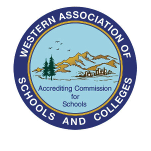Y by mathematicsy, samrocksnature, HamstPan38825, jhu08, Adventure10, Mango247, Rounak_iitr, Yiyj
Let  be a triangle with incenter
be a triangle with incenter  , and suppose the incircle is tangent to
, and suppose the incircle is tangent to  and
and  at
at  and
and  . Denote by
. Denote by  and
and  the reflections of
the reflections of  and
and  over
over  . Let
. Let  be the intersection of
be the intersection of  with
with  , and let
, and let  be the midpoint of
be the midpoint of  . Prove that
. Prove that  and
and  are perpendicular.
are perpendicular.








 The value of
The value of 
![[asy]
unitsize(3cm);
pointpen=pathpen=black;
pointfontpen=fontsize(10pt);
pair A=D("A",dir(110),NW), B=D("B",dir(200),SW), C=D("C",dir(-20),SE), I=D("I",incenter(A,B,C),NE);
path uc=D(incircle(A,B,C));
pair D=D("D",IP(uc,D(B--C))), E=D("E",IP(uc,D(C--A)),NE), F=D("F",IP(uc,D(A--B)),NW), G=D("G",2*I-E), H=D("H",2*I-F), Q=D("Q",extension(B,C,G,H),W), M=D("M",(B+C)/2);
D(B--Q--I--M);
[/asy]](http://latex.artofproblemsolving.com/c/6/e/c6e6172d2db35d81a4530b03bcc64c92d42b94de.png)
 so
so  Hence
Hence 

 and hence we are done.
and hence we are done. Then, since
Then, since we are done.
we are done.  so we are done.
so we are done.




